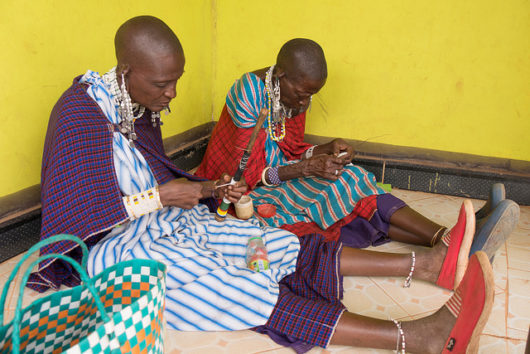Advocates Empowering Kenya’s Female Maasai

As is often the case in many poor global communities, Maasailand has a culture of gender inequality. The majority of Kenya’s female Maasai are enslaved by cultural belief systems, denying them from achieving basic human rights. Fortunately, there are advocates working to change this reality and improve women’s rights in Maasailand, Kenya.
Intimate Portrait of Kenya’s Female Maasai
Even in the 21st century, many Maasai women are not educated or only have a partial education. Young women are usually forced into marriage by their fathers into more privileged communities in exchange for cattle and cash. All Maasai girls are subject to a cultural tradition known as the cutting ceremony. It is an annual rite of passage in which girls’ clitorises are cut to signify their transition into womanhood and to mark daughters eligible for marriage. Despite the fact Kenya has outlawed genital cutting to prevent the deaths of even more young Maasai girls, male tribal elders continue to enforce the ritual.
According to the Lööf Foundation, a Swedish nonprofit organization working to improve the lives of international youth, the Kenyan Maasai community lacks adequate health care and Maasai women must travel long distances to receive medical treatment or give birth. The foundation reported that approximately 75 percent of Maasai women give birth on roadsides because the nearest health centers are too far away and that each year one out of every 10 Maasai women and an estimated 20 percent of Maasai infants die during roadside deliveries.
Maasai women can never divorce, except in extreme cases of physical abuse. They are prohibited from remarrying, even if they are widowed in their teens, and merely become the property of one of their husband’s brothers. They will be one of many wives and bear many children, regardless of their health or ability to provide for them.
However, there are various organizations that are working for improving the rights of Kenya’s female Maasai.
Organizations Empowering Kenya’s Female Maasai
- The Lööf Foundation is constructing the Kenswed Maternity and Health Center in Ngoni, Kenya. The center will provide both prenatal and antenatal care, as well as general health care to the public and sexual education to youths. The foundation hopes the center will reduce the high maternal and infant mortality rates.
- The Maasai Education, Research and Conservation (MERC) Institute works to preserve the Maasai culture and community. It partners with various types of organizations and the Kenyan government to ensure Maasai people’s empowerment and to establish social policies that will create benefits like universal clean water access. MERC co-founded the Maasai Girls Education Fund and also supports schools dedicated to girls’ education.
- The Maasai Girls Education Fund (MGEF) provides scholarships to all Maasai girls. Scholarships are all-inclusive and cover everything from uniforms and books to personal hygiene supplies. MGEF also offers performance monitoring, counseling and provides community education workshops to address the social customs and cultural beliefs inhibiting girls’ education. Workshops are open to anyone with the authority within the community to influence cultural change. MGEF provides business training and seed grants to rural Maasai women. Upon completing their educations, girls have the economic independence and ability to assert their rights as women. The goal is to increase female education enrollment by giving them the necessary tools to economically better their families and educate their children.
- Katy Leakey, the proprietor of Fair Trade Winds, started The Leakey Collection, a line of jewelry created by Maasai women to help their families combat the financial hardships resulting from prolonged droughts. The jewelry is made from reeds that would otherwise be burned to plant grass for cattle feed. The reeds are cut, dyed and crafted into bead-like pieces called Zulugrass. Her business model enables Maasai women to be entrepreneurs, not employees. These women take Zulugrass kits back to their communities and employ others to assist them. This newfound empowerment is enriching the lives of Kenya’s female Maasai by making them happy, independent and resilient.
The Story of Nice Leng’ete
As children, Nice Leng’ete and her older sister, Soila Leng’ete, would flee their homes during genital cutting season. Then one year, Soila did not run. Nice kept reminding Soila they were fleeing for a purpose, but despite Nice’s pleas, Soila still surrendered herself to the centuries-old custom. The trauma Soila endured ingrained itself in Nice’s memory. She made her life’s mission to protect other Maasai girls from the same fate by founding a program that travels to villages throughout Maasailand collaborating with elders and girls to form new, symbolic rites of passage in place of cutting. According to a January 2018 New York Times report, Nice Leng’ete had saved 15,000 girls from genital cutting thus far.
Kenya’s female Maasai experience heartbreaking living conditions that are a direct result of cultural beliefs and traditions that consider women as less valuable. Due to these reasons, the Maasai women are forced into marriage and a life of manual labor. However, the power of change shall not be doubted, and for Kenya’s female Maasai, the proof lies in the advocates working to improve their lives forever.
– Julianne Russo
Photo: Flickr
